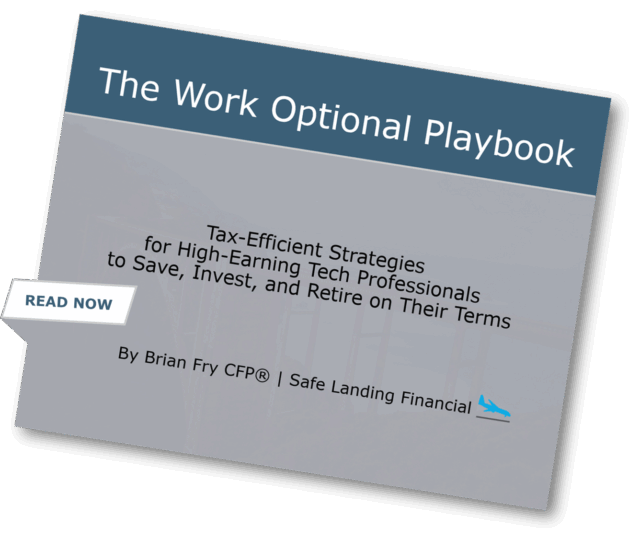2025 Market Outlook
In this short video, I cover key takeaways from the 2025 JPMorgan long-term capital market assumptions report and highlight four actionable steps you can take now to stay ahead and plan effectively for the long term.
While the year brings new opportunities, I also want to take a moment to acknowledge the challenges many in the LA area are facing with the ongoing wildfires. My thoughts are with everyone affected, and I’m here to support you if you need assistance navigating any financial uncertainties during this time.
2025 Market Outlook Video Transcript
Hi, this is Brian Fry with Safe Planning Financial.
I want to share my viewpoints with the 2025 market outlook in place, including what 2024 was like, how did we get to this point, what do we expect going forward, and what does it mean for your overall financial plan?
Starting off, it’s important to recognize that going into this year, the US markets have been really hot. The last time we experienced this type of rise in US large caps, it led to a period called the “lost decade.” This period started with the dot-com crash in the early 2000s and then the Great Recession in 2008. It’s significant because it’s one of the few periods where the S&P 500 actually had a negative rate of return.
If we fast forward to the next ten years, the S&P 500 and US large caps have been rising at a much faster rate than any other sector of the market. We now have higher valuations than perhaps ever before. That context is important before looking at our 2025 market update.
Recapping last year and where we’re at today, US large-caps led with a 25% rate of return for 2024, followed by US small-cap at over 11.5% for 2024. For the rest of the market—high-yield bonds, emerging market equities, commodities, cash, REITs, developed market equities, and fixed income—followed in that order for 2024. That’s a useful basis for starting out.
For the 2025 market outlook, there are many expert opinions. I prefer to look at JP Morgan’s annual capital market assumptions report, led by Dr. David Kelly and his team. They consistently provide conservative market outlooks and some of the best ideas in finance. JPMorgan’s annual long-term capital market assumptions is where I pull numbers for building financial plans. I use forward-looking rates of return rather than historical rates of return.
JP Morgan projects inflation rates to stay relatively flat, from 2.5% in 2024 to 2.4% in 2025. Cash rates may increase slightly, from 2.9% to 3.1%, though that’s not necessarily a good sign. Intermediate treasuries are expected to decrease from 3.9% to 3.8%, and the US Aggregate Bond Index may drop from 5.1% to 4.6%. Investment-grade corporates are expected to decline from 5.8% to 5%, and high-yield bonds from 6.5% to 6.1%. World ex-US government bonds may decrease from 4.9% to 4.2%, and US muni bonds from 4% to 3.6%. Overall, fixed income is on a downward trajectory for forward-looking rates of return. This isn’t what happened in 2024, but rather what the expectations were heading into 2024. This is the information I use when building financial plans, based on insights from JPMorgan’s economic experts.
For equities, JPMorgan expects US large-cap to decrease from 7% in 2024 to 6.7% in 2025, US mid-cap from 7.6% to 7%, and US small-cap from 7.2% to 6.9%. International developed markets, excluding the US and Canada, may decline from 9.2% to 8.1%, and emerging markets equity from 8.8% to 7.2%. Across the board, equity rates of return are projected to be lower than both historical averages and last year’s expected rate of return numbers.
For real estate, JPMorgan projects an increase from 7.5% to 8.1%. This is one of the few bright spots in their outlook.
It’s important to note that these projections are just one source in JPMorgan. Vanguard, Schwab, Fidelity, and other financial institutions also publish market outlooks, and their takeaways are often similar. However, I personally use JPMorgan’s report for its conservative assumptions, which are valuable for building financial plans.
The takeaways are similar for the other financial institutions’ reports – we have lower than historical rates of return.
Planning Takeaways
How does this impact your financial situation for going forward? Here my planning takeaways from analyzing the JPMorgan capital market assumptions report:
1. Update your financial plan.
Using the JPMorgan capital market assumptions helps to stay conservative for financial planning vs. maybe using the historical rates of return. It’s helpful for showing an overly optimistic plan and helps provide a potentially more useful financial plan.
2. Is your financial plan using forward-looking or historical rates of return assumptions?
By using historical rates of return, we are planning for the worst and hoping for the best to better prepare for your financial future.
3. Are your investments aligned with your goals?
Considering that markets go in cycles, it’s important to look at where you’re at with your asset allocation. Do the risks of your portfolio align with your overall financial goals?
4. Remain focused on the long-term
And finally, it’s important to recognize that JPMorgan looks at the objective of mapping out the next ten years when building their capital market assumptions report. So we should do the same when by attempting to avoid the headlines that can detract from your financial plan’s success. We don’t have a crystal ball for the next year and it’s impossible to accurately predict market returns.
Let me know if you’d like to discuss how this outlook may affect your financial strategy.
FREE FINANCIAL PLANNING CONSULTATION
A complimentary 4-step process sharing how to minimize
taxes, optimize investments, and enjoy retirement on your terms.
This process is designed to help you evaluate our services
and make an informed choice for planning your financial future.
More Resources
JPMorgan 2025 Capital Market Assumptions Press Release
2025 Important Planning Numbers? (Free PDF resource)
Backdoor Roth Guide + Flowchart
Mega-Backdoor Roth Guide
RSU Guide + Strategy After Vesting
Deferred Compensation Guide + Case Study
HSA Guide + Strategy for Reimbursement
Financial Planning for Dell Employees
Financial Planning for Tech Professionals
Financial Planning for Retirement and Beyond
Risk Disclosure: Investing involves risk including the potential loss of principal. No investment strategy can guarantee a profit or protect against loss in periods of declining values. Past performance does not guarantee future results.
This material is for information purposes only and is not intended as an offer or solicitation with respect to the purchase or sale of any security. The content is developed from sources believed to be providing accurate information; no warranty, expressed or implied, is made regarding accuracy, adequacy, completeness, legality, reliability, or usefulness of any information. Consult your financial professional before making any investment decision. For illustrative use only.
This information is not intended to be a substitute for specific individualized tax advice. We suggest that you discuss your specific situation with a qualified tax professional.
Disclosure: Safe Landing Financial LLC is a registered investment adviser. This communication is not intended as an offer or solicitation to buy, hold or sell any financial instrument or investment advisory services. Safe Landing Financial does not guarantee the accuracy or the completeness of any description of securities, markets or developments mentioned. Please visit our website for important disclosures.

Safe Landing Financial Newsletter
Sign up for monthly planning insights for tech professionals and pre-retirees!


